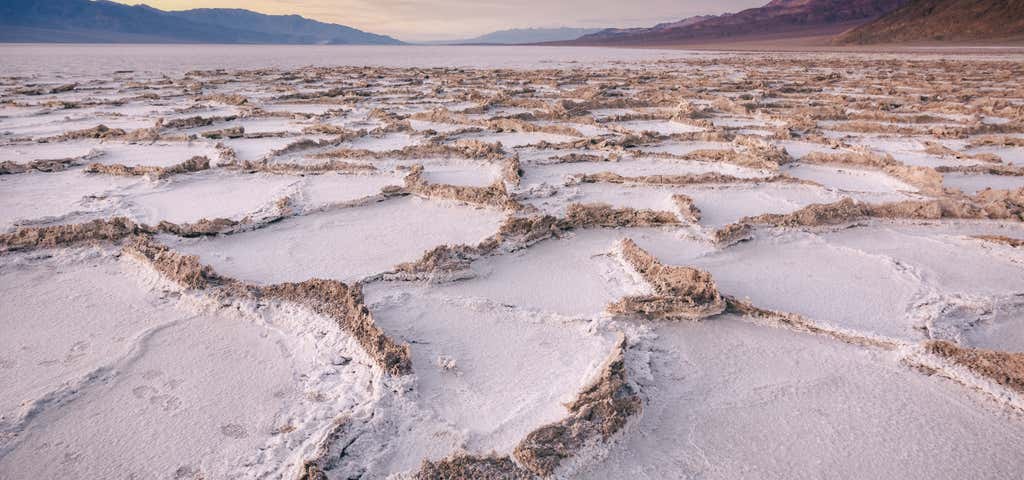03-07-2023 ALERTS IN EFFECT (NPS): Road Closures -- Due to winter storm damage/icy conditions, many roads, including North Highway and Beatty Cut-Off are closed/impassible. Winter Closures -- The access road to Telescope Peak trailhead is closed beyond the Charcoal Kilns, due to snowy conditions. Many other roads remain closed due to damage and debris from major flooding this summer. Check the NPS website for more information.
Death Valley is the largest U.S. National Park outside Alaska at 3.4 million acres. Nearly 1000 miles of paved and dirt roads provide access to locations both popular and remote. Even so, 91% of the park is protected as officially designated Wilderness. That wild country includes low valley floors crusted with barren salt flats, rugged mountains rising as much as 11,000 feet, deep and winding canyons, rolling sand dunes, and spring-fed oases. Whether you have an afternoon or a week, careful planning will help make your visit safe and enjoyable.
The Furnace Creek Visitor Center is the main visitor information source for the park. It is open Daily from 8-5 and there is a fully staffed information desk with information on all aspects of the park and its operation.
GPS Navigation to sites to remote locations like Death Valley are notoriously unreliable. The map is to the visitor center
In this below-sea-level basin, steady drought and record summer heat make Death Valley a land of extremes. Yet, each extreme has a striking contrast. Towering peaks are frosted with winter snow. Rare rainstorms bring vast fields of wildflowers. Lush oases harbor tiny fish and refuge for wildlife and humans. Despite its morbid name, a great diversity of life survives in Death Valley.
Death Valley: The name is forbidding and gloomy. Yet here you can find colorful badlands, snow-covered peaks, beautiful sand dunes, rugged canyons, the driest and lowest spot in North America, and the hottest in the world.
On any given summer day, the valley floor shimmers silently in the heat. For five months of the year unmerciful heat dominates the scene, and for the next seven the heat releases its grip only slightly. Rain rarely gets past the guardian mountains, but the little rain that does fall is the life force of the wildflowers that transform the desert into a vast garden.
Despite the harshness and severity of the environment, more than 1000 kinds of plants live within the park. Those on the valley floor have adapted to a desert life by a variety of means. Some have roots that go down 10 times the height of a person. Some plants have a root system that lies just below the surface but extends out in all directions. Others have leaves and stems that allow very little evaporation and loss of life giving water.










/-116.8668,36.4618,14/300x172@2x?access_token=pk.eyJ1Ijoicm9hZHRyaXBwZXJzIiwiYSI6ImNsdjQ5N2VtZDA2bW8ycW13ZHAxeGhjbjkifQ.UIccpoAxc7g3BAuK4s9vjg)